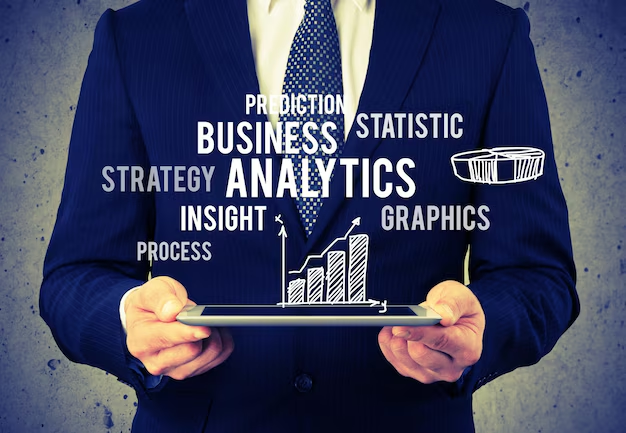Data-Driven Marketing is transforming the way businesses operate, allowing them to better understand their customers, make more informed decisions, and optimize their strategies for improved results. Here’s how it’s shaping the future of business:
1. Personalization at Scale
One of the most significant impacts of data-driven marketing is the ability to offer hyper-personalized experiences to customers. By analyzing customer behavior, preferences, purchase history, and interactions, businesses can tailor their messaging, product offerings, and promotions to individual customers. This level of personalization enhances customer satisfaction and loyalty.
- Example: Streaming platforms like Netflix and Spotify use data-driven marketing to recommend shows, movies, and music based on user preferences and past behaviors.
2. Enhanced Customer Segmentation
Data allows businesses to segment their audience more effectively. Instead of using broad demographics like age or gender, companies can now segment customers based on behavior, interests, online activity, and even psychographics. This leads to more targeted marketing campaigns that resonate with the right people at the right time.
- Example: E-commerce platforms can create different campaigns for users who are browsing for specific categories of products, like electronics, apparel, or home goods.
3. Real-Time Insights and Decision-Making
Data-driven marketing enables businesses to track customer actions in real time, allowing them to make decisions on the fly. For example, if an online ad is performing exceptionally well, companies can increase its budget in real time to maximize ROI.
- Example: Companies use tools like Google Analytics, social media insights, or A/B testing to analyze real-time data and adjust marketing strategies instantly.
4. Optimized ROI with Predictive Analytics
With data, businesses can use predictive analytics to forecast future trends and customer behavior. By leveraging historical data, businesses can identify patterns and predict what products or services will be popular, when to launch marketing campaigns, and how much budget to allocate for maximum return on investment (ROI).
- Example: Retailers can predict which products are likely to be in high demand during certain seasons, adjusting their inventory and marketing spend accordingly.
5. Automation and Efficiency
Automation tools powered by data have made it easier for businesses to scale their marketing efforts. Automated email campaigns, personalized content delivery, and customer journey mapping are all possible with data-driven insights. These processes save time and reduce human error while delivering more relevant content to customers.
- Example: Automated email marketing platforms like Mailchimp use customer data to send personalized messages based on behaviors, such as abandoned cart reminders or post-purchase follow-ups.
6. Improved Customer Experience (CX)
Data-driven marketing enhances the overall customer experience by enabling companies to deliver more relevant, timely, and engaging interactions. By understanding customer preferences and pain points, businesses can design a seamless, positive journey across multiple touchpoints—from websites to customer support.
- Example: Chatbots and virtual assistants use customer data to provide quick, personalized answers and assistance, improving customer satisfaction.
7. Better Content Strategy
Data insights also help businesses create content that speaks to their audience’s needs, interests, and challenges. By analyzing which types of content resonate the most with customers, businesses can refine their content strategies to maximize engagement and conversions.
- Example: Brands can track how blog posts, videos, and social media content are performing, then adjust their future content production based on what drives the most traffic or conversions.
8. Measurement and Attribution
Data allows businesses to better measure the success of their marketing efforts. With tools like Google Analytics and advanced attribution models, companies can understand how different channels and touchpoints contribute to a customer’s decision-making process. This insight helps optimize future marketing efforts and budget allocation.
- Example: A company can measure how much impact a Facebook ad has on sales by tracking click-through rates and conversion data across multiple platforms.
9. Building Trust and Transparency
With consumers becoming increasingly aware of data privacy, businesses that are transparent about how they use data build trust with their customers. Ethical data collection and usage policies can lead to stronger customer relationships and brand loyalty.
- Example: Companies that provide opt-in consent for data collection and give customers control over their data preferences foster trust and respect.
10. Competitive Advantage
Finally, businesses that leverage data to understand trends, predict future behaviors, and deliver personalized experiences can gain a significant competitive edge. Companies that use data-driven insights to innovate and meet consumer demands faster will lead their industries in growth and profitability.
- Example: Companies like Amazon use advanced data analytics to anticipate customer needs, offering quick delivery, personalized recommendations, and tailored marketing, giving them a competitive advantage in the e-commerce sector.
Conclusion
Data-driven marketing is no longer a luxury—it’s an essential strategy for businesses that want to stay competitive and thrive in the future. By embracing data analytics, businesses can better understand their customers, optimize their marketing efforts, and drive growth and profitability. The future of marketing will be even more personalized, efficient, and customer-centric as technology and data continue to evolve.

